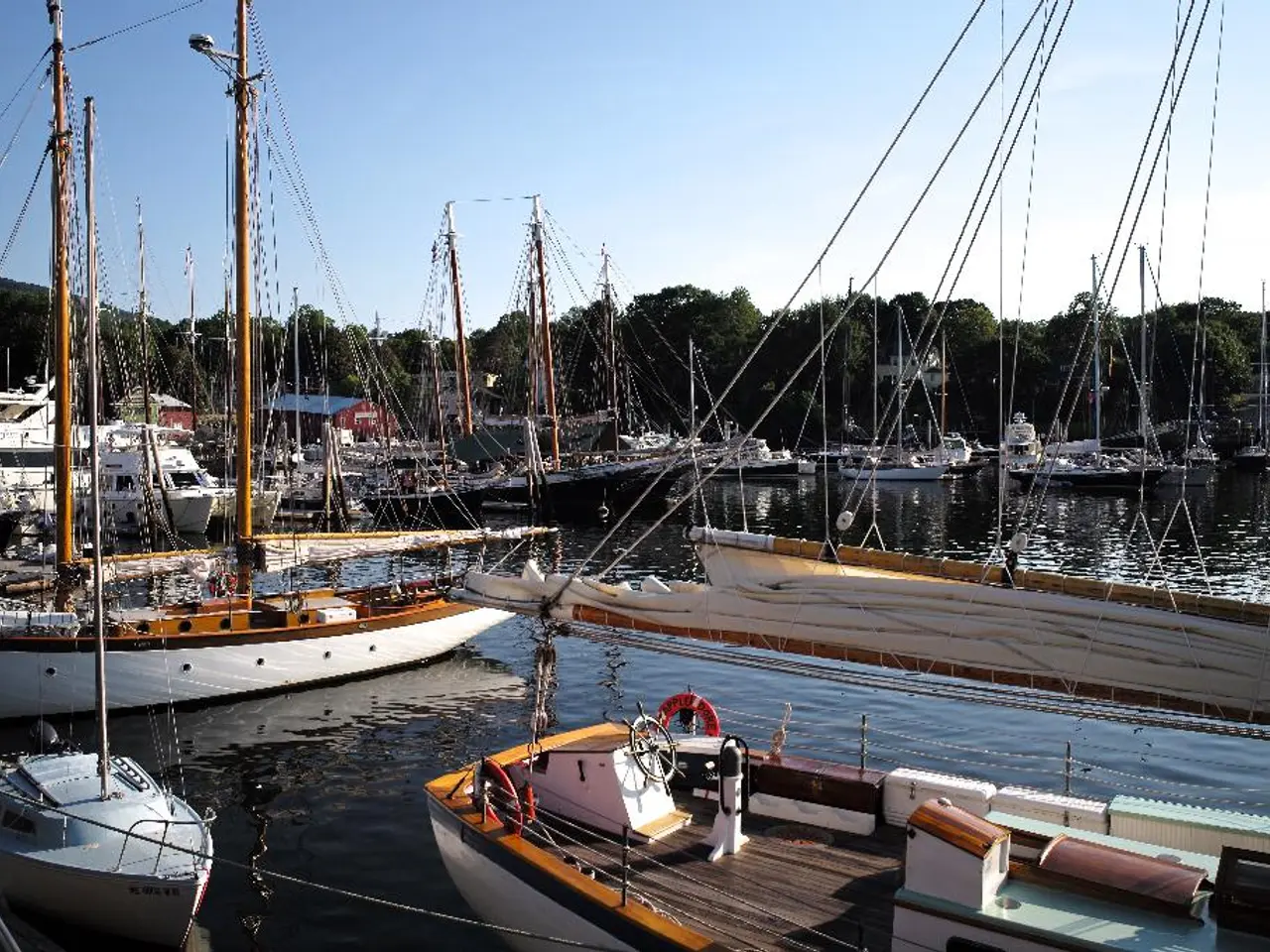Maritime Exploration in Contested Territories
Navigating the Contested Waters: Cooperation and Challenges in the Baltic Sea
In the heart of the Baltic Sea, a disputed area between Denmark's Bornholm Island and Poland's coast has sparked discussions about navigation safety and the role of hydrographic surveys. This contested zone is a result of an unsettled dispute over Exclusive Economic Zones (EEZ) limits.
Current international regulations for hydrographic surveys in disputed sea areas are primarily governed by principles under the United Nations Convention on the Law of the Sea (UNCLOS), customary international law, and specific diplomatic or legal agreements between the states concerned. These frameworks emphasize respect for sovereignty, good faith, peaceful resolution, and cooperation.
However, in the case of the disputed area, there is no clear regulation for paper charts, Electronic Navigation Charts (ENCs), surveys to update ENCs, or Navigational Warnings Service. This lack of regulation poses a potential threat to the safety of navigation in this area.
Despite the challenges, both the Danish and Polish Hydrographic Services have demonstrated a commitment to cooperation. Commander Lars Hansen, a member of four regional Hydrographic commissions, and Captain (PN) Andrzej Kowalski, the National Hydrographer and Chief of the Hydrographic Office of the Polish Navy, have worked together to address practical problems in the disputed area.
Last year, both national Hydrographic Offices cooperated to complete surveys required for HELCOM routes passing through the disputed area. This collaboration was a significant step towards ensuring the safety of navigation rules in this contested zone.
In 2011, Poland raised the issue of surveying tasks in disputed sea areas, including the one between the Danish Bornholm Island and the Polish Coast. The Polish delegation suggested that procedures for hydrographic surveys in disputed areas should be developed.
However, there are no procedures explicitly regulating hydrographic activities in disputed areas like the one between Poland and Denmark. This gap in regulation could potentially lead to unilateral actions that could prejudice boundary delimitations or escalate disputes.
In an effort to address this issue, Denmark and Poland agreed to conduct a common survey of the route passing through the disputed area and to exchange the data. This agreement, made through diplomatic channels, underscores the importance of cooperation in maintaining navigational safety in disputed areas.
Commander Lars Hansen, head of the Hydrographic Service in the Royal Danish Navy, specializes in shallow water and arctic bathymetry, while Captain (PN) Andrzej Kowalski has served in various roles within the Polish Navy, including Chief of Sea Training and Commanding Officer of the Hydrographic Squadron.
Both Commander Lars Hansen and Captain (PN) Andrzej Kowalski have represented their respective countries in international organisations such as the International Hydrographic Organization (IHO), International Maritime Organization (IMO), and NATO Working Groups.
While the IHO sets standards for hydrographic practices and nautical charting, it does not resolve sovereignty disputes or delimit boundaries. However, it does encourage states sharing geographic features to agree on naming and delimitation to support harmony and navigational safety.
In sum, hydrographic surveys in disputed maritime areas must comply with UNCLOS legal norms, maintain state sovereignty and good faith, and preferably occur under cooperative arrangements or clarified boundaries. Unilateral surveying risks contestation unless backed by prior agreement or international adjudication. The IHO provides technical guidance but no jurisdiction over disputes. The ongoing cooperation between Denmark and Poland serves as a model for resolving such challenges and ensuring the safety of navigation in disputed areas.
- The importance of hydrographic surveys in ensuring the safety of navigation, particularly in disputed areas like the Baltic Sea, is highlighted.
- The Danish and Polish Hydrographic Services are working together to address practical problems in the disputed area between Denmark's Bornholm Island and Poland's coast.
- The Danish and Polish Hydrographic Offices collaborated last year to complete surveys required for HELCOM routes passing through the disputed area.
- In 2011, Poland raised the issue of surveying tasks in disputed sea areas, including the one between the Danish Bornholm Island and the Polish Coast.
- There are no procedures explicitly regulating hydrographic activities in disputed areas like the one between Poland and Denmark, which could potentially lead to unilateral actions.
- Denmark and Poland agreed to conduct a common survey of the route passing through the disputed area and to exchange the data.
- The International Hydrographic Organization (IHO) sets standards for hydrographic practices and nautical charting, but does not resolve sovereignty disputes or delimit boundaries.
- The ongoing cooperation between Denmark and Poland serves as a model for resolving challenges in disputed areas, promoting harmony and navigational safety, and fostering careers in environmental-science, education-and-self-development, career-development, technology, industry, business, and finance.




